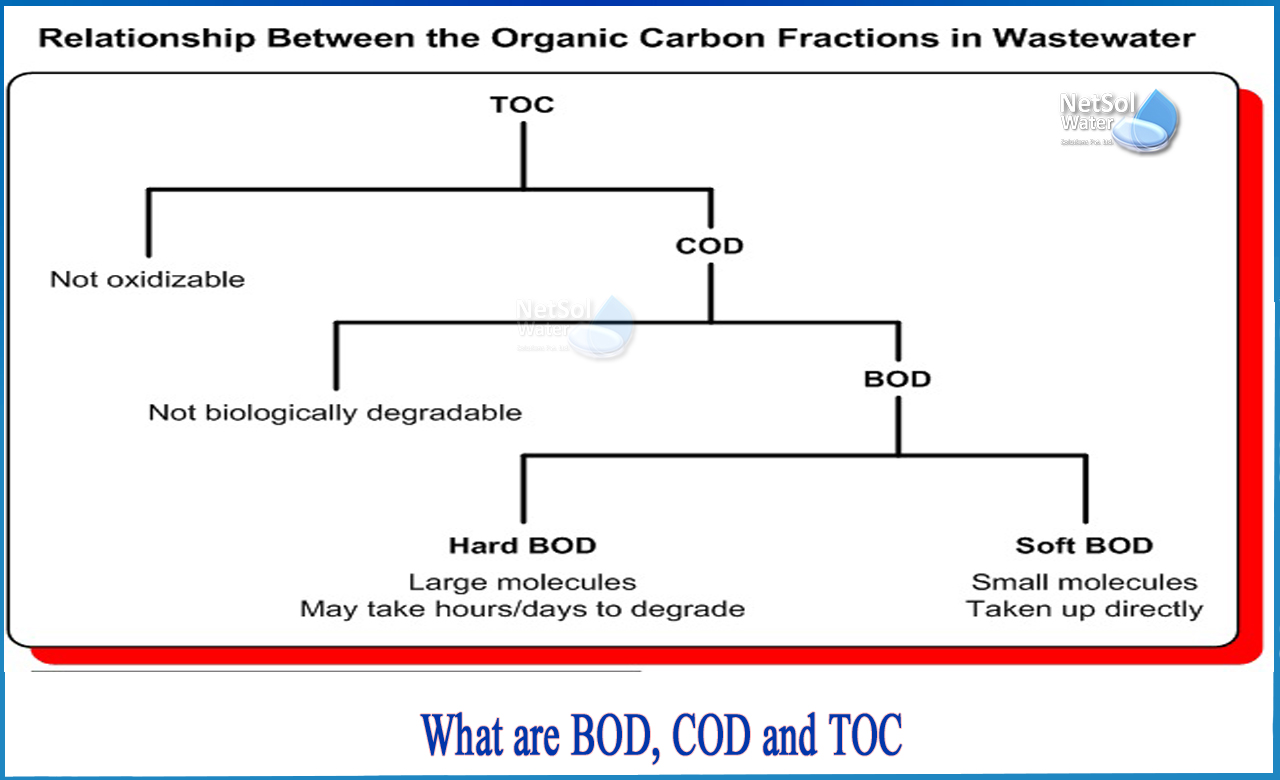
What are BOD, COD and TOC?
Conventional analysis techniques for assessing pollution levels in water and wastewater are laboratory-based devices that measure the oxygen demand required to oxidise pollutants. Biological Oxygen Demand (BOD) and Chemical Oxygen Demand (COD) are the standard tools (COD). BOD and COD are used to calculate the oxygen-depleting effects of waste pollutants. Total Organic Carbon (TOC) measurement, which directly detects inorganic and organic carbon, is an exception to this norm.
What does BOD stand for?
BOD stands for biochemical oxygen demand.
BOD is a measure of the proportion of organic matter that can be decomposed by microbes and is commonly represented as the quantity of oxygen used (mg/L) over five days at 20°C or three days at 27®C. BOD contains quickly biodegradable organic carbon (carbonaceous or cBOD) and, in rare occasions, ammonia (nitrogenous or nBOD). The principal driver of BOD is soluble, particulate, and colloidal organic carbon molecules (cBOD).
Various characteristics:
· Time span: five or three days
· Precision: Extensive precision ranges of +/-10-20%, with low repeatability.
· Interferences: Wastes containing microbial activity suppressors can hinder and restrict BOD values.
· Specificity: The use of BOD is limited to a single sample and is not linear.
What does COD stand for?
COD stands for chemical oxygen demand.
The quantity of oxygen required for the chemical oxidation of substances in water is referred to as COD. This need is calculated using a strong oxidant, most often dichromate and, to a lesser degree, permanganate.
Various characteristics:
· Time: a few hours
· Limitation of oxidation: Some organic compounds are highly resistant to dichromate oxidation, resulting in an incorrectly low COD.
· Inorganic carbon: There is no distinction between organic and inorganic carbons during the oxidation phase.
· Additional inorganics that may interfere include chlorides, nitrite, ferrous iron, and sulphide.
What does TOC stand for?
TOCstands for total organic carbon.
The total organic carbon (TOC) in a sample is a direct measure of all organic carbon. The oxidation of organic carbon molecules determines it. TOC analysers can be designed to measure a variety of organic carbon fractions, including TOC, Purgeable Organic Carbon (POC), Non-purgeable Organic Carbon (NPOC), and Dissolved Organic Carbon (DOC).
Inorganic Carbon (IC) is eliminated or quantified depending on the organic carbon approach used. Total Carbon may be calculated by measuring both inorganic and organic carbon (TC).
Various characteristics:
· TOC analysers detect the quantity of organic carbon directly, without any interferences.
· TOC analysers are available in a range of configurations.
· Time required: less than ten minutes
· TOC analysis frequently yields accuracy and precision within +/-5 percent over a wide range of values ranging from 1 ppb to 50,000 ppm.
· TOC does not provide information about the entire oxidising state. Most rules still require BOD and COD reporting.
Conclusion:
Organic contaminants are found in a wide range of water and wastewater samples. While COD, BOD, and TOC all provide information about the level of pollution in water and wastewater, only TOC provides a direct measurement in minutes, allowing for process control and quick decision making.
No comments:
Post a Comment